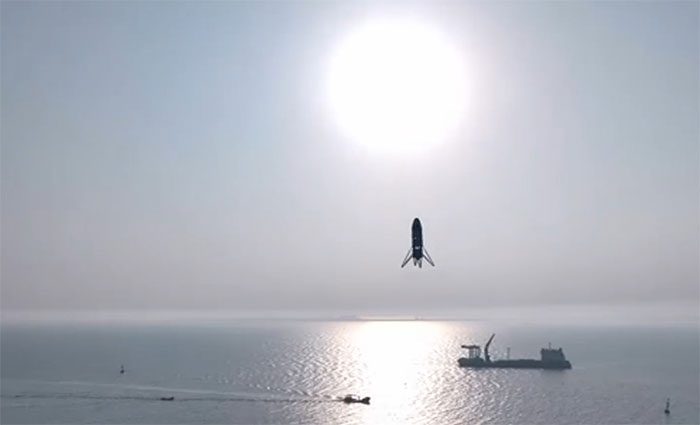Chinese Academy of Sciences (CAS) announced on April 6 that this technology will lay the foundation for future applications, including a recyclable low-earth space experiment platform and the development of space tourism.
The commercial company CAS Space, owned by CAS, revealed that it successfully tested this rocket launch from the ground, and it landed in the sea off Haiyang, Shandong Province.

China’s newly tested rocket capable of vertical landing on the sea. (Photo: Global Times).
This rocket model flew at an altitude of over 1,000 meters and was able to slowly land thanks to a reverse thrust engine. In the final phase, the rocket’s landing speed decreased to just about 2 m/s. The CAS Institute of Mechanics reported that the landing test took place over 10 minutes.
A senior engineer from the CAS Institute of Mechanics shared with Global Times on April 6 that this rocket model is 2.1 meters long, has a diameter of 0.5 meters, and weighs 93 kg at launch. The rocket is equipped with dual engines providing a thrust of 550 newtons.
Manufacturers revealed that this ocean recovery rocket technology will be applied to future rocket models, such as Lijian-3. Another engineer from CAS Space also mentioned the application of this technology in space tourism in the future, aiming to take passengers to an altitude of 100 km.
Expert Pang Zhihao in Beijing commented to Global Times that landing the rocket on the sea will significantly reduce costs since the landing point can be moved on the water.
However, recovering the rocket at sea may face challenges due to complex weather conditions over the ocean.


















































